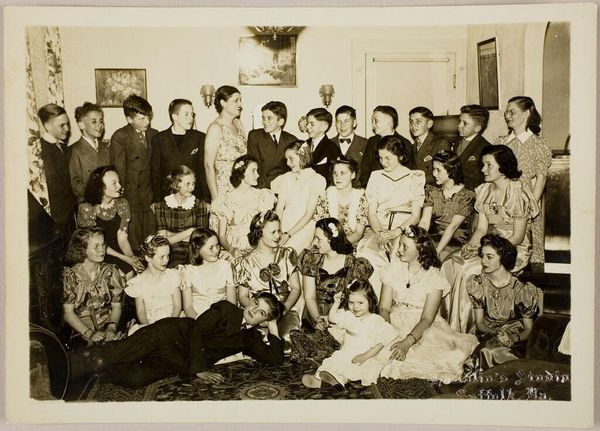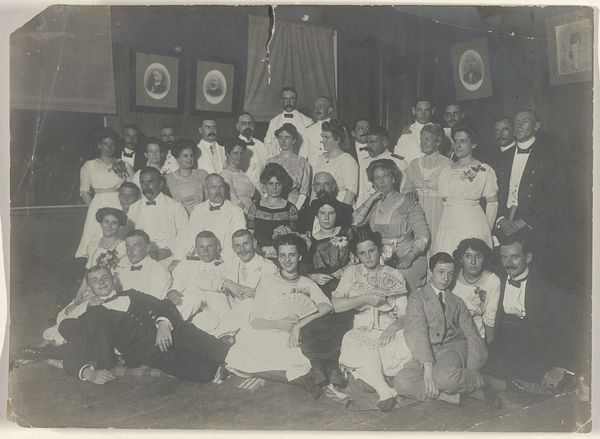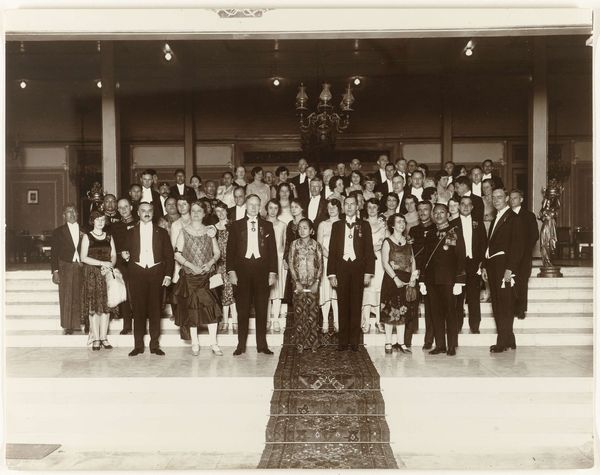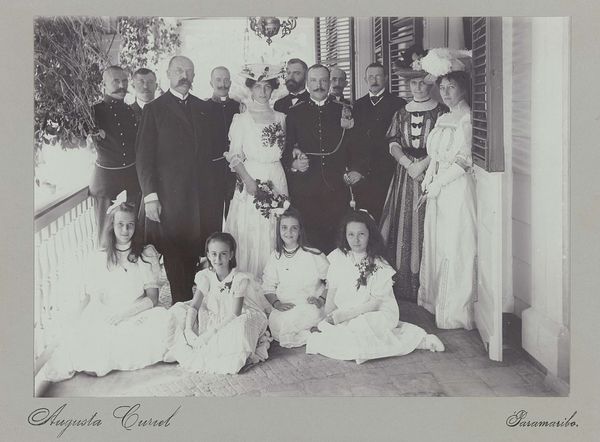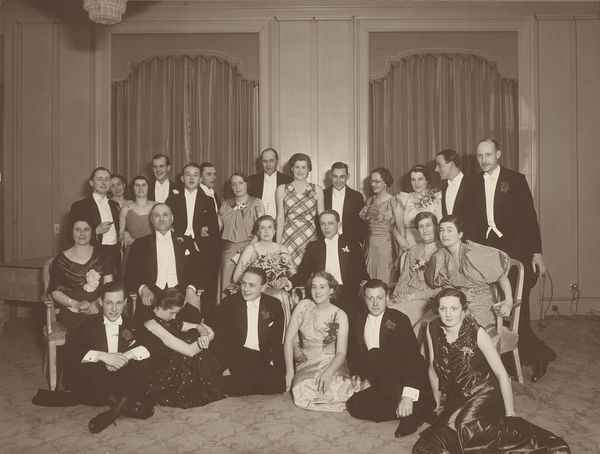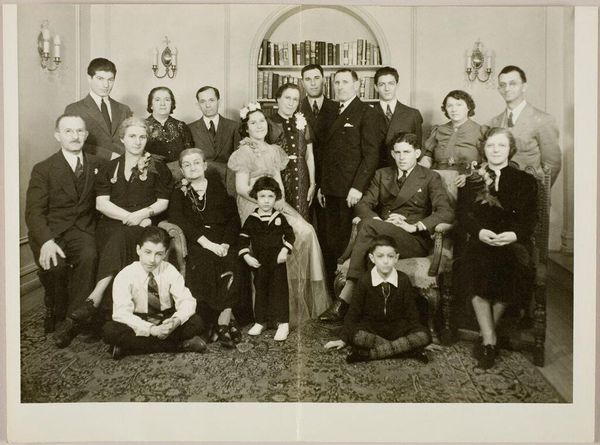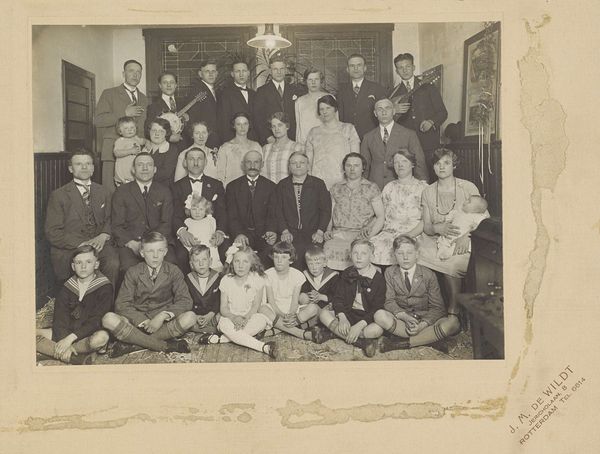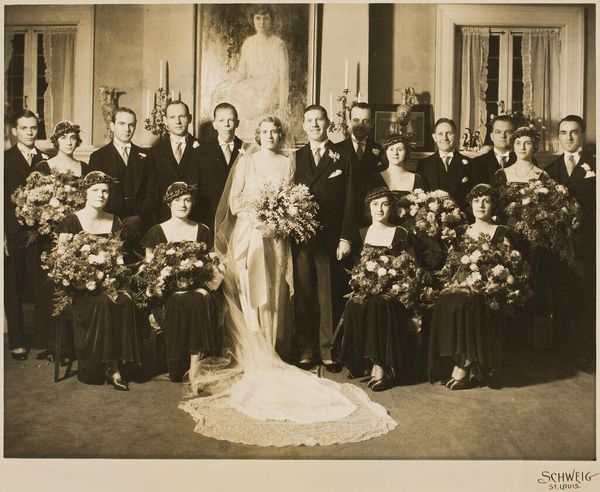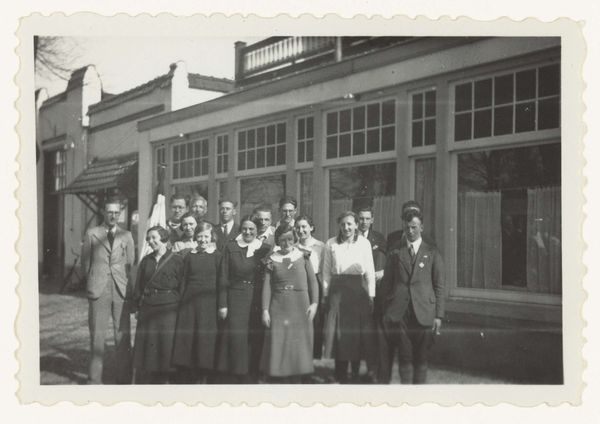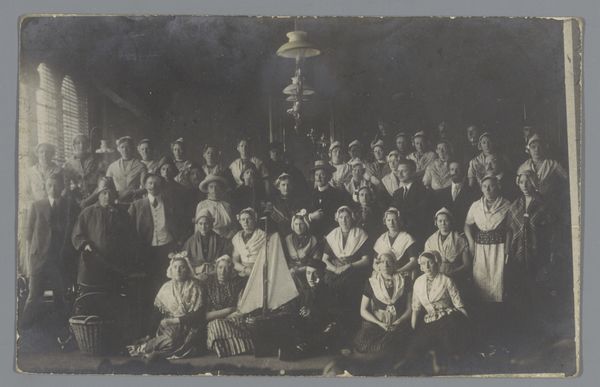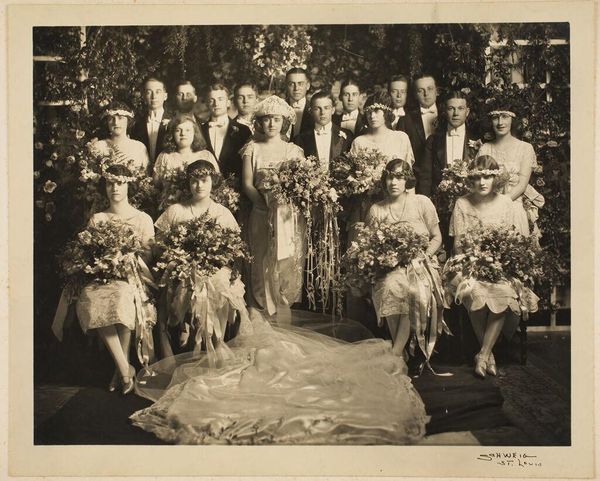
print, photography
#
portrait
# print
#
wedding photography
#
archive photography
#
photography
#
historical photography
#
group-portraits
#
realism
Dimensions: length 15 cm, width 20 cm
Copyright: Rijks Museum: Open Domain
Editor: This is "Galafeest cavalerie," a photograph, likely a print, taken between 1938 and 1939. It looks like a large group portrait – everyone dressed in formal attire. There’s a curious sense of youthful formality but something a bit sad, perhaps just the weight of the past evoked by a black and white photograph. How do you interpret this work? Curator: Indeed. The image pulsates with multiple layers of meaning, beyond its seemingly straightforward representation of a social event. Notice how the composition divides along gender lines, a visual echo of societal structures prevalent during that time. The uniforms worn by the men aren’t simply clothes; they're visual signifiers of power, duty, and perhaps even a looming war. How do the faces strike you? Editor: They appear almost staged, not entirely joyous; some faces have hints of melancholy, even anxiety, despite the celebratory context. Is that intentional or my projection? Curator: Excellent observation. It reveals an essential truth: Images are never neutral. These faces, frozen in time, carry the weight of historical and cultural context. Given the time frame, leading up to the Second World War, the celebratory surface can be viewed as a mask, shielding underlying anxieties and uncertainties. Their posture communicates dignity, doesn’t it? Editor: Absolutely, though the context really deepens it. Thinking of it that way, these posed smiles are really a shared cultural script performed against a backdrop of enormous historical pressure. Even this photographic style can be read as symbolic! Curator: Precisely! Photography, as a medium, had evolved into more than documentation; it was carefully chosen to frame how cultural memory and identity were performed. What stories might these faces tell us about the looming war if they could speak freely? Editor: It is haunting to consider it in that context. This isn't just a simple photograph. It's a window into a world on the precipice of change. Curator: Indeed. The image lingers and reminds us that the meaning of visual culture shifts as we grow and societies change, reflecting human continuity, through memory and art.
Comments
No comments
Be the first to comment and join the conversation on the ultimate creative platform.
